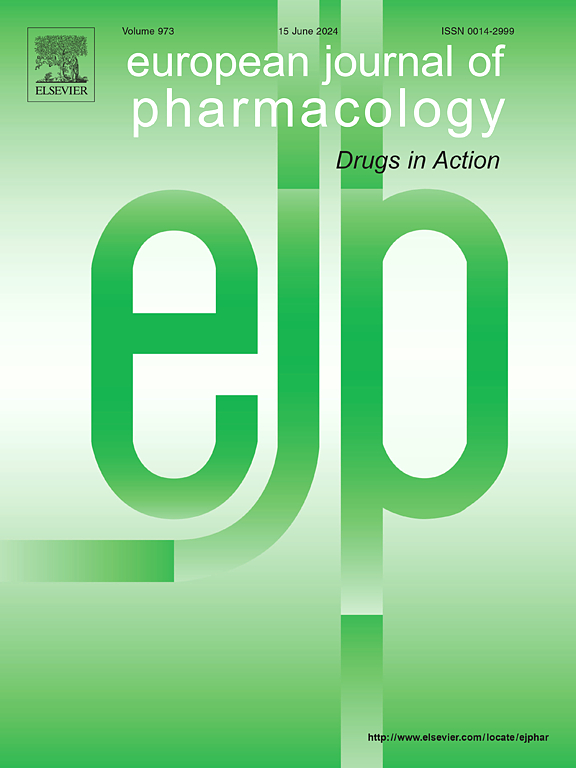Immune-endothelial cell crosstalk in hepatic endothelial injury of liver fibrotic mice
IF 4.2
3区 医学
Q1 PHARMACOLOGY & PHARMACY
引用次数: 0
Abstract
Introduction
Liver fibrosis is a common pathological process in chronic liver disease, reflecting the advanced stage of the disease. Liver endothelial cells (ECs), especially liver sinusoidal endothelial cells (LSECs), are recognized as critical modulators of liver homeostasis and play essential roles in the recruitment and function of liver immune cells. In this study, we aimed to explore the mechanism of hepatic EC injury and the potential regulatory pathways of intercellular communication in liver fibrosis.
Methods
In this study, C57BL/6 male mice were treated with CCl4 for 6 weeks to establish a liver fibrosis model. Masson staining and immunohistochemistry were performed to assess the extent of liver fibrosis. Hepatic endothelial injury was detected by using scanning electron microscopy (SEM) and PCR technology. Single-cell RNA sequencing (scRNA-seq) was performed to analyze phenotypic changes in nonparenchymal cells and dissect intercellular crosstalk.
Results
A total of 24,534 cells were clustered into 10 main cell subsets. The LSEC fenestrae and surface receptor expression were reduced, and the expression of Cd34 was upregulated. Liver ECs exhibited dense cellular crosstalk with immune cells (macrophages, T and B cells). The analysis of intercellular signaling pathways revealed that immune cells targeted liver ECs through the Ptprc-Mrc1 and Sell-Podxl signaling pathways to maintain cellular interactions during liver fibrosis.
Conclusion
We revealed apparent damage and capillarization of liver ECs and demonstrated the cell-cell communications among liver immune cells and ECs during the development of liver fibrosis. The Ptprc-Mrc1 and Sell-Podxl signaling pathways exerted prominent roles in liver immune cell-EC interactions.
免疫内皮细胞串扰在肝纤维化小鼠肝内皮损伤中的作用。
肝纤维化是慢性肝病常见的病理过程,反映了疾病的晚期。肝内皮细胞(Liver endothelial cells, ECs),尤其是肝窦内皮细胞(Liver sinusoidal endothelial cells, LSECs)是肝脏稳态的重要调节因子,在肝脏免疫细胞的募集和功能发挥中起着重要作用。在本研究中,我们旨在探讨肝EC损伤的机制以及肝纤维化中细胞间通讯的潜在调控途径。方法:采用CCl4治疗C57BL/6雄性小鼠6周,建立肝纤维化模型。采用马松染色和免疫组化评价肝纤维化程度。采用扫描电镜(SEM)和PCR技术检测肝内皮损伤。单细胞RNA测序(scRNA-seq)用于分析非实质细胞的表型变化和解剖细胞间串扰。结果:共有24534个细胞被聚类成10个主要的细胞亚群。LSEC窗口和表面受体表达降低,Cd34表达上调。肝脏内皮细胞与免疫细胞(巨噬细胞、T细胞和B细胞)表现出密集的细胞串扰。细胞间信号通路分析显示,免疫细胞通过Ptprc-Mrc1和Sell-Podxl信号通路靶向肝ECs,以维持肝纤维化期间的细胞相互作用。结论:在肝纤维化的发生过程中,我们发现肝内皮细胞明显的损伤和毛细血管化,并证实了肝免疫细胞与内皮细胞之间的细胞间通讯。Ptprc-Mrc1和Sell-Podxl信号通路在肝脏免疫细胞- ec相互作用中发挥重要作用。
本文章由计算机程序翻译,如有差异,请以英文原文为准。
求助全文
约1分钟内获得全文
求助全文
来源期刊
CiteScore
9.00
自引率
0.00%
发文量
572
审稿时长
34 days
期刊介绍:
The European Journal of Pharmacology publishes research papers covering all aspects of experimental pharmacology with focus on the mechanism of action of structurally identified compounds affecting biological systems.
The scope includes:
Behavioural pharmacology
Neuropharmacology and analgesia
Cardiovascular pharmacology
Pulmonary, gastrointestinal and urogenital pharmacology
Endocrine pharmacology
Immunopharmacology and inflammation
Molecular and cellular pharmacology
Regenerative pharmacology
Biologicals and biotherapeutics
Translational pharmacology
Nutriceutical pharmacology.

 求助内容:
求助内容: 应助结果提醒方式:
应助结果提醒方式:


